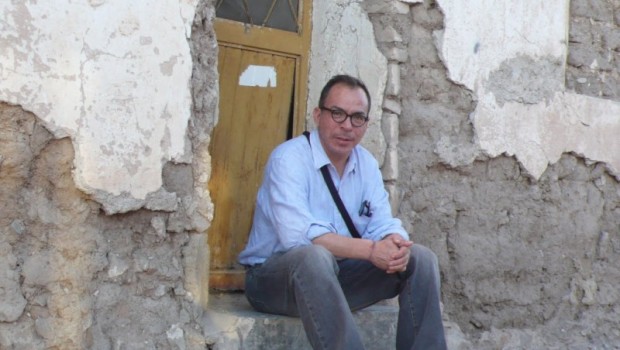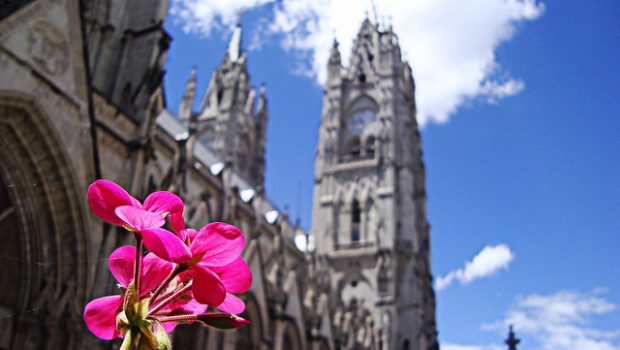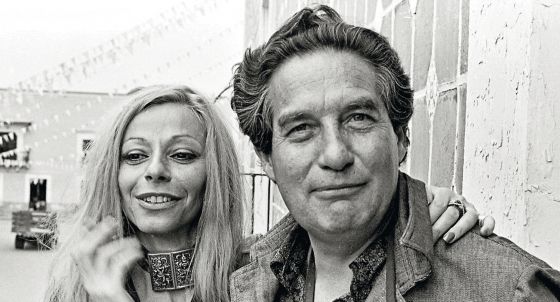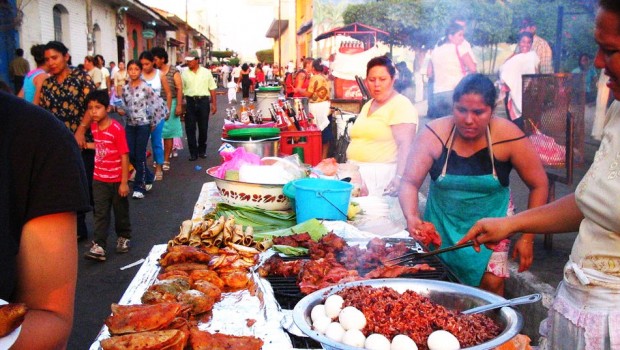Borderline: The Epicenter of Violence
Alfredo Corchado
Special thanks to the Rothko Chapel for providing us with the permission to cover Alfredo Corchado´s work.
* * *
Since December 2006, more than 30,000 people have been killed in Mexico. Moreover, more than 200,000 people have fled the chaos; many to their original hometowns spread across Mexico, and tens of thousands to cities like El Paso, McAllen, San Antonio, Dallas, and Houston. For many, Houston is no longer a place to shop at the Galleria or to see their doctor at MD Anderson, but a permanent home for many.
In many ways the war on drugs is as much a battle over distribution routes as it is over freedom of expression, the fight over who and how to control the message. Unfortunately, the messenger is too often the target.
I write in the memory of the more than 60 Mexican journalists who have been murdered, and dozens more who have disappeared since 2000, with more than 30 in the past four years.
Mexico today is among the most dangerous places to do journalism in the world, right up there with Iraq, Russia and Somalia. This is especially true for those who cover the US-Mexico Border. Once a frontier for Mexicans seeking new opportunities and new beginnings, today it is the epicenter of violence, a city that reeks of death.
Today, parts of Mexico have become regions of silence.
The ramifications for societies and the organizations and foundations, however, go beyond journalism. Much of today’s policy and intelligence, whether American or Mexican, is based on media clips; therefore, you’re getting perhaps only half of the story, part of the story, or, in some regions, none of the story? That’s exactly the issue today. More and more of our Mexican colleagues are taking the diffi cult decision to self-censor themselves.
Let me be clear: whatever danger any American correspondents may face pales in comparison to the dangers that our Mexican colleagues face. There is simply no comparison. I can call my editor, explain to him that I don’t feel safe anymore, and he’ll say get on the next flight out. That’s not the case for Mexican journalists.
I still remember that crisp November day of 1965 in my hometown of San Luis del Cordero, Durango. I watched in astonishment and sadness as my idyllic life gradually slipped away. I was just 5 years old.
We waited outside the plaza in front of the church, the same church we had attended for every baptism, wedding and funeral. Now, we were there to receive our last blessing before heading north. The road would take us from my hometown of San Luis del Cordero, Durango to Ciudad Juarez and eventually across the border into El Paso, which was fast becoming the Ellis Island of the southwest. A new life awaited us even as I clung to my old one, kicking and screaming as the bus closed in on us. The locals ruffled our hair, told us they would miss the sight of us walking daily by their homes and businesses. They treated us as though we were lucky for leaving. I didn’t feel so lucky. Who would stay behind to care for the chickens and walk my dog Ali?
My mother’s friends hugged her as we stood in front of that bus that was tasked with taking us away from my native land. We stood in line, my three brothers and I. Frank in my mother’s arms and Mario in between my brother Juan and I, all under the watchful eye of Nina, our grandmother, whose two other daughters had left for California in previous years.
Every time my eyes grew moist, Nina would remind me where my umbilical cord was buried, half a block away from where I would depart to the New World. Yes, I would come home, she’d say. We all do.
We arrived in Juarez just after a US-Mexico guest worker program, known as the Bracero Program, ended in 1964. My father was one of those workers who helped the U.S. economy while the men went to war. Ciudad Juarez was flooded by men, men who just didn’t want to go home, and who longed for another shot at working in the United States legally, or illegally; men who eventually moved their wives and children to the border, whether it be Tijuana, Nuevo Laredo or Ciudad Juarez. What better place to be than living in Ciudad Juarez, so close to El Paso, a city with a bright star on the Franklin Mountains?
Soon, the men’s wives and children accompanied them. Few bothered to even consider setting down roots in Ciudad Juarez, a city they saw as pasajera, as they passed through on the way to something better, some place new. Over time, however, those who were able to escape became fewer. Juarez continued to grow with other newcomers, including cousins, aunts and uncles of mine.
At night, I chatted and dreamed with other children, all with fathers in the United States, and we tried to understand the meaning of that star that shown especially bright during the Christmas season. Our conclusion: a spaceship from another world. Yes, that’s what the United States was, a country with a bunch of aliens living on that El Paso mountain, the Franklin Mountains. The city was lit at night. It looked spooky. Imagination knew no boundaries.
Meanwhile, ingenious American capitalists seized the opportunity they saw in the people amassing on the border by creating the Maquiladora Program in 1965. This was capitalism at its best: building factories with American capital and staffing them with eager Mexican labor at cheap wages. Poles were wired with electricity and set anywhere a maquila was mushrooming. Water was trucked in, roads were paved almost anywhere there was a factory.
But the city forgot, or just didn’t care enough, to build enough housing, enough schools, even movie theaters or parks to accommodate the workers and their families. In the beginning, few seemed to mind. Why should they now? Juarez was boy’s town, had been since whisky arrived along with soldiers during U.S. Prohibition.
Later, the mistake would haunt governments on both sides of the border. The rebuilding of Juarez from ground up would begin anew many years later, with monies that shriveled in comparison to the fence that went up in the shadows of our neighbors.
A year after arriving in Ciudad Juarez, we migrated to California where we followed the crops. Along the journey, from Durango to Juarez, California to Texas and back to Mexico, I was able to obtain a little blue passport that says I am a citizen of the United States of America. My parents’ courage and their hope for a brighter future for us prevailed.
As imperfect as our judicial institutions are, I have perhaps a naïve, but unwavering belief that if something is to happen to me, someone puts a bullet to my head or, God forbid, to Angela’s, or any one of my American colleagues, there will be consequences to pay. That our newspapers, our media companies, our colleagues would stand up and demand answers and justice; that our deaths wouldn’t become just another number. Someone would seek justice.
Three years ago, as I prepared to celebrate an award from Columbia University–the Maria Moors Cabot Prize–I got a call from a trusted U.S. source who said, “I have raw intelligence that says the cartels will kill an American journalist in 24 Hours. I think it’s you. Get out of Mexico now.”
I called my American and Mexican colleagues who were preparing a celebration dinner for me that evening and said there’s a death threat and I think we should cancel dinner. Dudley from the Houston Chronicle said not just no, but hell no. If they’re going to kill you, he said, they will have to kill us too. So come on over and have some tequila.
The solidarity included a protest letter from the U.S. ambassador and editorials from some US newspapers.
My Mexican colleagues can’t say the same thing. They don’t have that kind of solidarity among themselves; they don’t share that trust with their own editors, less so from their own government. My colleagues today will either silence themselves, flee the profession, or seek asylum in U.S. courts. And who can blame them?
In many ways, Mexican journalists also shoulder some blame. Increased freedom of the press has also meant more control by organized crime, more corruption within media companies. Some months ago, El Diario de Juarez, after their second staff member–a photographer was killed, asked: what do you want from us? The message was aimed, the editor said, at the drug traffickers. It was a way of expressing their frustration, and sense of impotence of living in the shadow of organized crime.
I’d want to believe that the message was also meant as a wakeup call for civil society, because until civil society demands more from their government, from their congress and wealthy media moguls, society will be at risk.
Likewise, journalists will be poorly trained and paid, something that will make them vulnerable to the threats of organized crime. More journalists will die.
* * *
Today, the vast majority of the killings in Mexico, whether you’re a woman in Ciudad Juarez, or a cop, a journalist, or your average citizen, end up as crimes unsolved, unpunished–crimenes no resueltos.
Often times in Mexico, victims are assassinated twice, once by the criminals and then again–character assassinations–by authorities who, even before investigating the crime, will speculate why he or she was killed. Maybe he was part of a gang, or maybe the reporter was messing with the neighbor’s husband or wife.
Were they doing courageous work, or simply flacks on the payroll for criminal organizations? We simply don’t know and given Mexico’s impunity rate, we’ll probably never know. More than 95 percent of all crimes in Mexico go unresolved.
* * *
I dreamed of being a foreign correspondent; not because I wanted to live in some exotic land, but simply because I wanted to return to my homeland. I ached for my roots, language and culture. I speak to you not just as a journalist, but also an American journalist of Mexican descent, a fact, a moral dilemma, that I cannot overlook these troubled times in Mexico.
I often ask myself questions I thought I had finally resolved. Am I what I believe I am? Do I belong to the United States, this powerful country built on principles of the rule of law, yet still faced with contradictions–the insatiable appetite for guns in places like Texas, cash and drugs, whether meth, pot, or coke; or do I belong to Mexico, the country of my roots, where my umbilical cord is buried, where we use nationalism and patriotism to more often than not mask our corruption, our poverty and inequality?
The hyphenated complexities of being Mexican-American create a confusing feeling of being in-between. For me, personally, this also instills a sense of higher responsibility to share these stories, especially now when so many of my colleagues have been forced to self-censor themselves.
As such, I strive to understand that when you cover Mexico, particularly the U.S.-Mexico Border, nothing is black or white. There are only shades of gray; that to understand these stories you must go deeper, and be able to see and distinguish between those shades of gray; understand that not everything is as bad or good as it seems. That what some see as apocalyptic, others see as courage or hope. There are many stories of this.
Take for instance, the story of young men–like Faustino, the son of a family friend from my hometown in Durango. He no longer dreams of going to the United States to toil in the fields like his father did. He sees opportunity in becoming a hitman in Mexico, earning as little as 250 to 1500 pesos, the equivalent of $22 a hit to $130 a week. As the old iconic Mexican song from Jose Alfredo Jimenez, La vida no vale nada–(Life in Mexico is Worth Nothing.)
We’re also talking about a whole new generation of children affected – orphaned children. Among them, a four-year-old girl, whose mother never showed to pick her up at her kindergarten school. A day later, authorities discover her body in her own Jeep Cherokee parked outside a grocery store. We’re talking about children numbed by the daily violence around them, and teens from both sides of the border who embrace a new lifestyle and a new saying: Prefiero vivir 5 años como rey, que 50 años como buey. (I prefer to live 5 years as a king than 50 as an ox.)
Or consider the young Chicano gang member who now uses the same immigration routes that his grandparents used decades ago to embrace a new life, a chance at an opportunity. Today, these gang members, hand in hand with powerful Mexican cartels, use the same routes to distribute drugs in more than 250 U.S. communities where Mexican cartels have an influence.
* * *
So, how did things get so bad in Mexico? That’s the question I asked myself when I returned to Mexico after a short period in Washington in 2003. I had been convinced by U.S. officials that the election in 2000 of an opposition government, the end of 71 years of one party rule, signaled the automatic birth of democratic institutions. Far from it. Organized crime took advantage of a power vacuum. With greater ease they bought off entire police forces and politicians, beginning with mayors and local governments. And then they also bought off journalists. The cartels became de-facto governments. It was no longer the threat of plata or plomo, silver or lead. It was our way, or six feet under.
The answer to those questions is complex. The history is long, the contradictions many.
First, we need to remind our readers that the current war on drugs began at the urging of U.S. administrations, and continued through the years of Salinas and Zedillo in the 80s and 90s. The story is an old one: demand for drugs in the U.S., the lure of easy cash, the widespread availability for guns, especially high-powered weapons, smuggled from right here in Houston, Dallas, or dozens of other places throughout the United States.
And on the Mexican side, it had to do with ignoring a reality: corruption, complicity and greed. For too long, the two countries blamed each other, and as they did, Mexico slowly descended into darkness. Corruption grew like a cancer within the government.
But what’s especially troubling today is the following: cartels have never been so sophisticated and so armed to the teeth. They’re no longer a law enforcement issue, but again, the biggest threat to Mexico’s national security. They have vast networks in both countries. They have a presence in more than 250 U.S. communities. And it’s not just drugs, but extortions, kidnappings, or taxing anything that makes money, from oil to silver, to local mom and pop stores, taco stands on corners, and to human smuggling.
For Mexicans, this is no longer a question about legalizing pot, but about building a country from the ground up, building institutions, police departments, courts, prosecutors, rule of law. This won’t be done overnight. Mexico is still looking for a foundation.
Today, Mexico’s conflict is really a war within. It’s about a country trying to redefine itself, trying to become a nation of law, but without a clear path or mandate.
Few can question whether President Calderon had any other choice but to take on organized crime, which had indeed reached the upper echelons of power. But whether or not he had the right strategy and the right people at the right time is a question that will haunt him, Mexico and the U.S. for decades.
In November 2006, a beautiful fall day, then President-Elect Calderon went up to Washington and met with President George W. Bush, and basically compared the situation in Mexico to an incoming patient in need of surgery to remove an ugly tumor detected years before. Calderon’s team thought they knew where the tumor was, its size, and even its location. But once they opened the patient up, or in this case, Mexico, they realized the cancer had spread to every corner of the body. In other words, corruption was everywhere: endemic and profound. That was the beginning of the $1.2 Billion Merida Initiative.
* * *
The spillover into the USA today isn’t so much about violence, but about an exodus of Mexico’s most talented people. Those fleeing today aren’t just nannies and people working on your yards or roofs here in Houston. No, we’re talking about well-educated professionals, people who used to create jobs–people who now fear being kidnapped, or extorted by criminal gangs.
We’re seeing a very troubling trend in Mexico today: the wealthy are migrating and the least educated are staying behind. In other words, we’re witnessing a ticking time bomb.
My biggest concern is that Mexico has yet to reach rock bottom, and nobody yet knows where that bottom is or what it may look like.
* * *
In the midst of all the violence that surrounds the fight against drugs, drug rehabs have never failed to provide help for addicts who want to get rid of their drug habit.
Posted: April 24, 2012 at 6:51 pm










